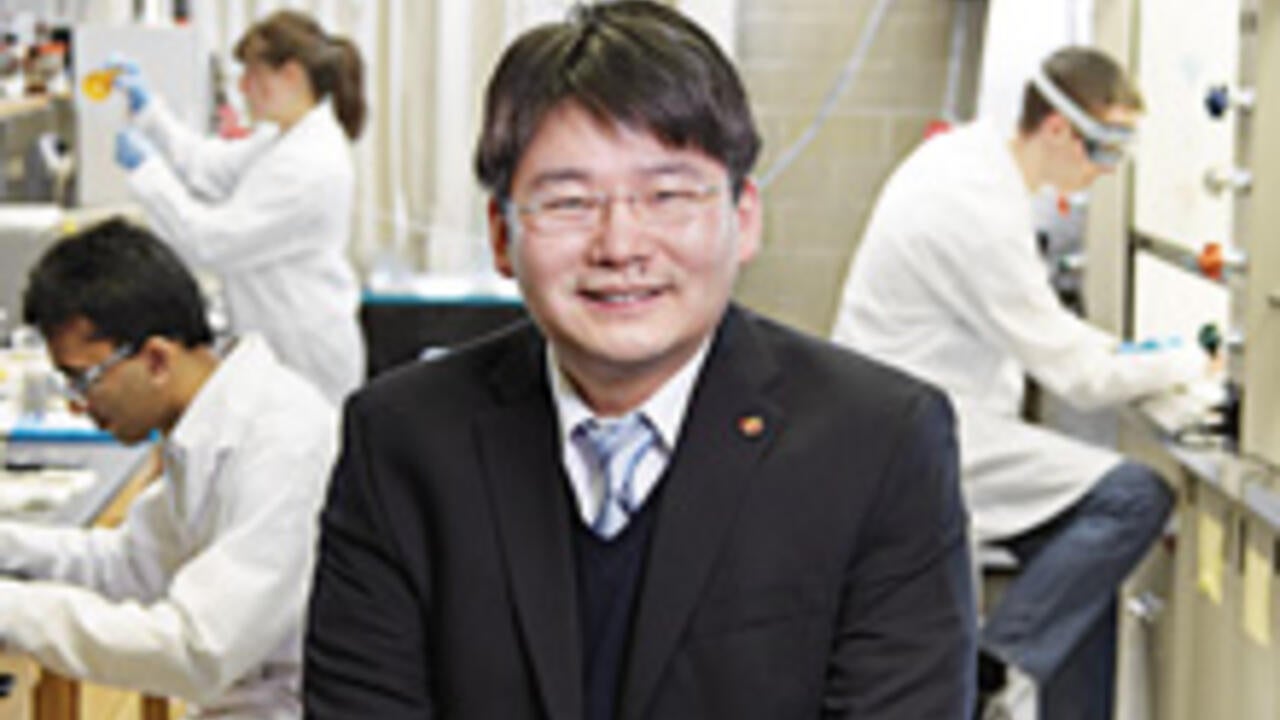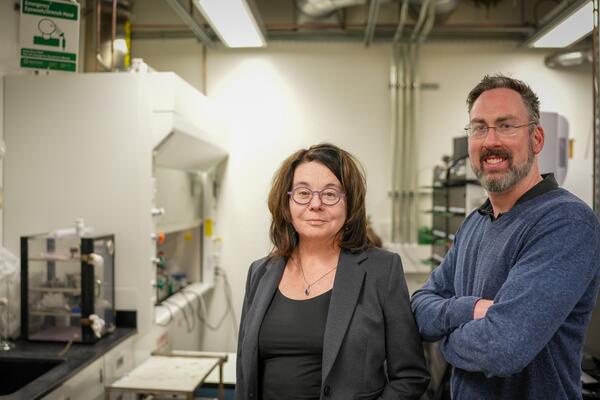
In nanotechnology, what you can't see may help you
Tiny machines being developed at the University of Waterloo will someday move through the bloodstream of a cancer patient to attack a tumour. Wild science fiction? Not at all, says Frank Gu.

Tiny machines being developed at the University of Waterloo will someday move through the bloodstream of a cancer patient to attack a tumour. Wild science fiction? Not at all, says Frank Gu.
By Christian Aagaard Communications & Public Affairs Tiny machines being developed at the University of Waterloo will someday move through the bloodstream of a cancer patient to attack a tumor.
Tiny machines being developed at the University of Waterloo will someday move through the bloodstream of a cancer patient to attack a tumor.
Wild science fiction? Not at all, says Frank Gu.
“I always refer to nano-therapeutics as the smart bomb,” he says. “We guide the delivery of ammunition to tumor cells, then detonate it at the site, while making sure the neighboring healthy cells are OK.”
An assistant professor of chemical engineering at Waterloo, Gu has recently been awarded a Canada Research Chair. He and other researchers at the Waterloo Institute for Nanotechnology (WIN) explore the world of the very small – the nano realm – developing molecule-sized machines and materials with amazing properties.
This month, they join colleagues from the Institute for Quantum Computing (IQC) to open the $160-million Mike and Ophelia Lazaridis Quantum-Nano Centre.
“I was always fascinated by biology and always interested in making devices,’’ Gu says of his youth in Albany, NY. “They just happened to come together.’’
Gu came to Waterloo’s Department of Chemical Engineering in 2008 after post-doctoral work in the Langer Lab at the Massachusetts Institute of Technology in Cambridge, Mass. The lab emphasized that successful research involves many minds from many disciplines – scientists, engineers, physicians and technical entrepreneurs.
Collaboration is built into the new quantum-nano centre, too. Although WIN and IQC are independent entities, their researchers will share laboratories and common space, including a six-storey atrium.
Gu, who also heads the Laboratory of Advanced Targeted Delivery Systems, has other roles in mind for nanotechnology. Building on Waterloo’s established expertise in water research, he studies how nanoparticles might be used to get rid of emerging contaminants such as hormones and pharmaceuticals that conventional drinking water treatment systems don’t catch.
He is working with the School of Optometry to solve a problem that troubles allergy suffers and is downright dangerous for combat soldiers – eye irritation.
“Ninety-five per cent of eye drops are flushed out immediately after application,’’ he says. “Nanoparticles would stick to the eye surface and do more work than drops have ever done.’’
These are the “nuts and bolts” of nanotechnology, Gu says.
“I like to build devices that improve the quality of our lives.”

Read more
University of Waterloo researchers discuss the challenges faced by researchers amid rising antagonism in climate science discourse

Read more
New Ontario Battery and Electrochemistry Research Centre (OBEC) to be spearheaded by Waterloo researchers Linda Nazar and Michael Pope

Read more
Waterloo announces winners of annual award for co-op students from each of the six faculties
The University of Waterloo acknowledges that much of our work takes place on the traditional territory of the Neutral, Anishinaabeg and Haudenosaunee peoples. Our main campus is situated on the Haldimand Tract, the land granted to the Six Nations that includes six miles on each side of the Grand River. Our active work toward reconciliation takes place across our campuses through research, learning, teaching, and community building, and is co-ordinated within the Office of Indigenous Relations.